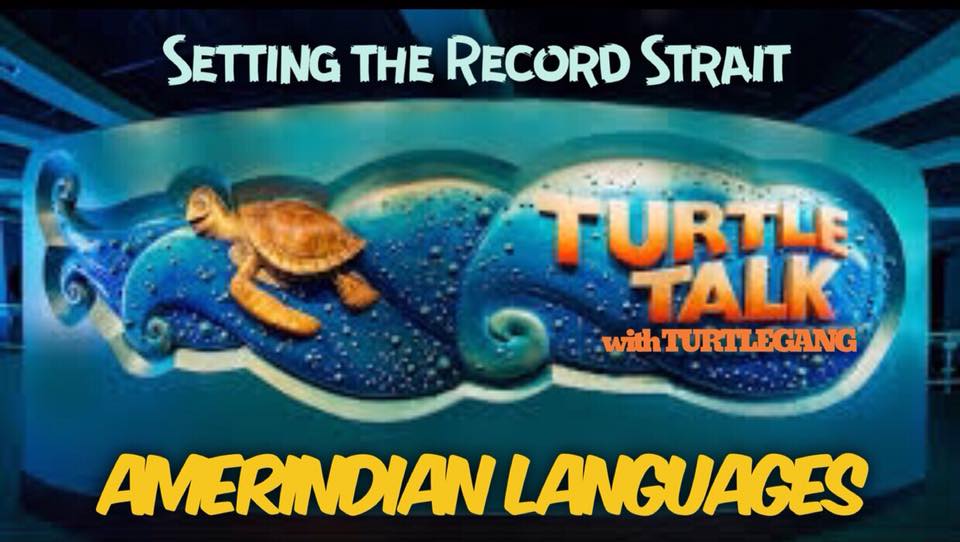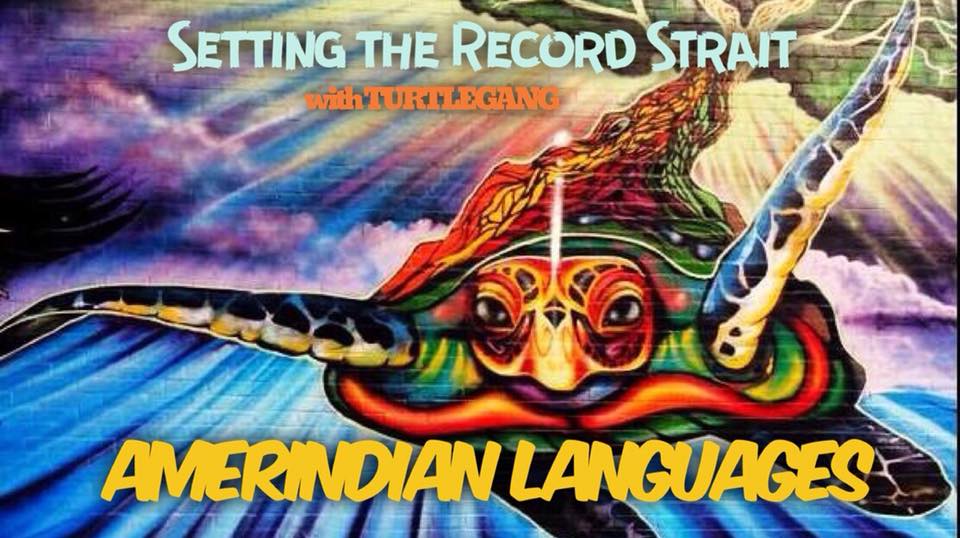 Setting the Record Straight About Native Languages: Linguistic Relationships
Setting the Record Straight About Native Languages: Linguistic Relationships
Q: Are Amerindian languages related to Mongolian?
A: No. Many people think American Indians are descended from Mongolian people. This may be true, but if it is, they left Asia more than 20,000 years ago, which is much too long a time period for linguistic preservation to occur. None of the Amerindian languages bear any linguistic resemblance to Asian languages.
Q: Are Amerindian languages descended from Hebrew, Ancient Egyptian, Scandinavian or Celtic languages?
A: No. The people who claim this are trying to prove that American Indians arrived in the Americas very recently (see Could Native Americans be recent immigrants? and Are Native Americans a lost tribe of Israel?) I have seen many websites claiming to “prove” that Amerindian languages are descended from Semitic or Germanic languages. 90% of these websites are deliberately lying, making up nonexistant “Algonquian” words that resemble words from Semitic languages. A quick glance at a dictionary of the Amerindian language in question will reveal these websites for what they are. The other 10% are using linguistically unsound methods–searching two languages for any two vocabulary words that begin with the same letter, essentially, and presenting them as evidence. Using this method, English can be “proved” to descend from Japanese–English “mistake” sounds a little like Japanese “machigai”. In fact, if you randomly generate some vocabulary with a computer program, you will be able to find a few words with surface resemblance to any language you want. Real linguistic analysis requires dozens of vocabulary relationships which are regular and predictable, as well as similarities in phonology and syntax, to show that one language is related to another. Here’s a good website by a Welsh speaker explaining the substantial linguistic differences between Mandan and Welsh, for example, or a website by an Athabaskan linguist explaining the differences between Carrier and Celtic. No linguist has ever shown a relationship between any Amerindian language family and a Semitic, Germanic or Celtic language.
Q: But I don’t know enough about linguistics to look at the phonology and syntax for myself. Can’t I tell anything from vocabulary?
A: Yes, but you need to examine at least three languages to make a valid comparison, and you need to use vocabulary items that have not been hand-selected as the one word in the language that bears some vague resemblance to the other. The numbers one through five are a good place to start. If four of the five look similar, or you notice a pattern in the way they are different from each other, the languages are probably related. Let’s look at some Germanic, Semitic, and Algonquian languages (spelled more or less phonetically):
| German | eins | zwei | drei | vier | funf |
| Dutch | een | twee | drie | vier | vijf |
| English | one | two | three | four | five |
| Hebrew | echad | shtayim | shalosh | arba | chamesh |
| Arabic | wachid | ithnan | thalatha | arba’a | chamsa |
| Maltese | wiehed | tnejn | tlieta | gherba | hamsa |
| Ojibwe | bezhig | niizh | niswi | niiwin | naanan |
| Algonquin | pejig | nìj | niswi | new | nànan |
| Cree | peyak | nîso | nisto | newo | nîyânan |
As you can probably see even from this small amount of data, English is related to Dutch and German; Hebrew is related to Arabic and Maltese; and Ojibwe is related to Algonquin and Cree. On the other hand, if I had taken only the English word “seven” and the Hebrew word “sheva,” maybe I could have convinced you English was related to Hebrew. And if I had shown you only Hebrew “shalosh” and Arabic “thalatha,” you might not have noticed they were related. (With the larger data set here, you can see that the “TH” sound from Arabic does not exist in Hebrew or Maltese–it becomes a “sh” in Hebrew all three times, and a “t” in Maltese all three times.)
Never believe anyone who tries to prove linguistic relationships based on one or two words that sound similar.
Q: Are Micmac, Cree, or Mayan hieroglyphics descended from Egyptian hieroglyphics?
A: No. They are all non-alphabetic writing systems, but otherwise have nothing in common at all. Egyptian hieroglyphics are sort of like a rebus. Some hieroglyphs represent sounds (consonants only, just like modern Semitic writing systems), others represent words or concepts. Many hieroglyphs are strung together top to bottom to make a word. Mayan hieroglyphics, on the other hand, are modular. One glyph contains several elements, including an element for gender and some for sound (both vowels and consonants). They resemble Chinese characters more than Egyptian hieroglyphics (though they’re not descended from Chinese either). Micmac hieroglyphs are primarily pictographs, not representing sounds at all–in fact, many symbols are mnemonics for an entire phrase or sentence. And Cree hieroglyphs are a syllabary. Each symbol regularly represents a syllable with a consonant (indicated by a shape) and a vowel (indicated by a position). “Hieroglyph” is not a linguistic term. It just means “arcane writing.” Micmac and Cree are not even the same basic type of writing system as Egyptian, and Mayan, though the same basic type, is a completely different realization of it. It would be more likely that a completely illiterate person would come up with one of these Amerindian writing systems than that someone already familiar with Egyptian would.

Previous question: Are Indian languages ‘real’ languages, or just dialects?
Next question: Did missionaries invent the Native American syllabaries?
Back to the Infrequently Asked Questions index
Language of the day: Maliseet

Native American Words  Native American Art
Native American Art  Native American Names
Native American Names
Would you like to help support our organization’s work with endangered American Indian languages?
Native Languages of the Americas website © 1998-2007  Contacts and FAQ page
Contacts and FAQ page











